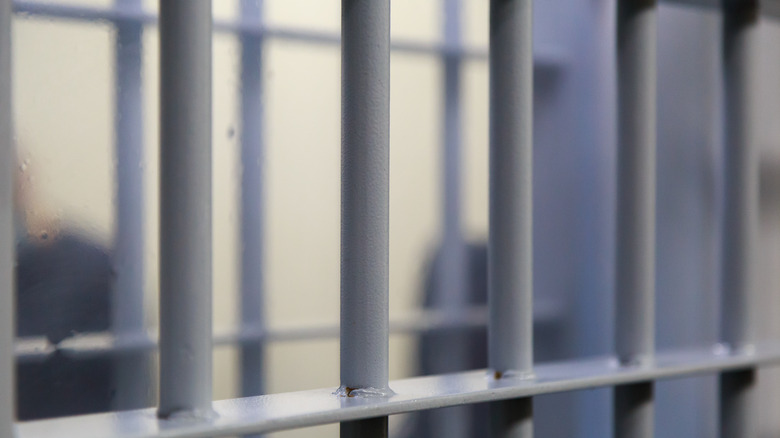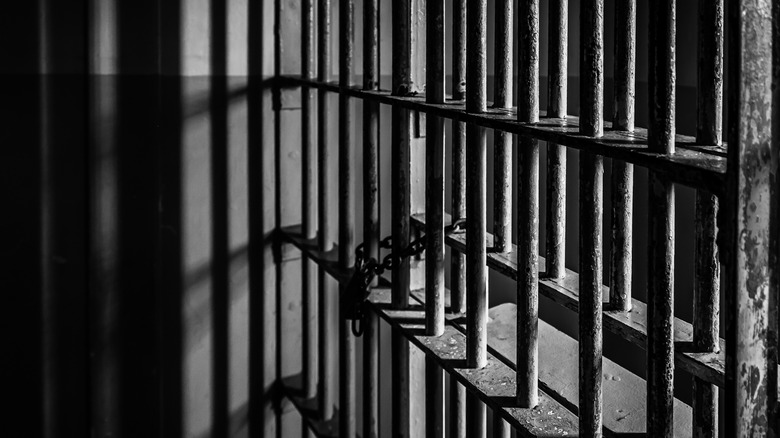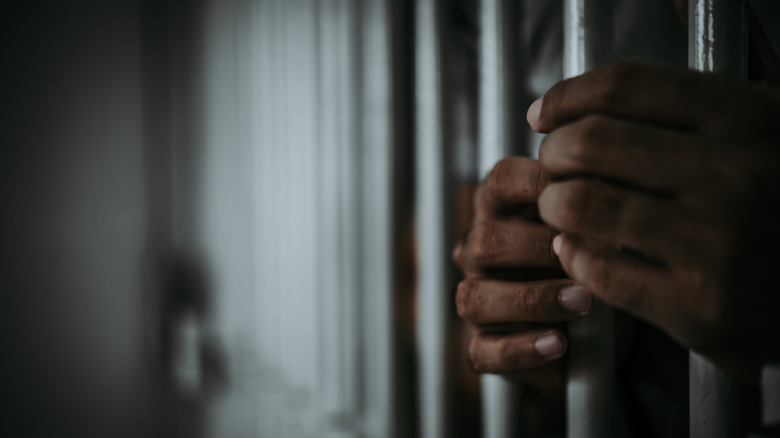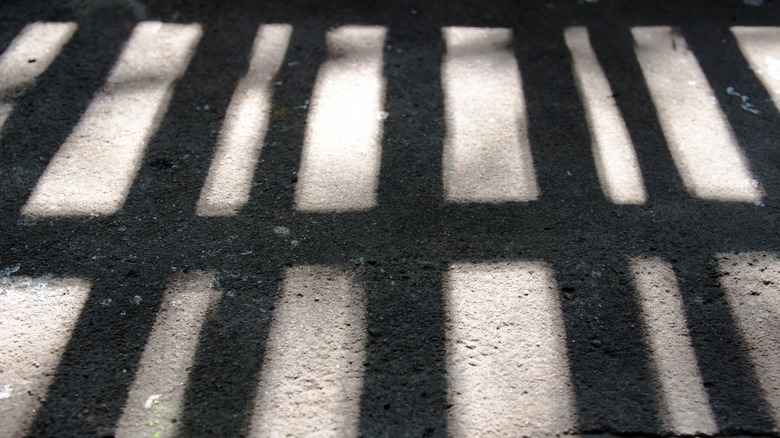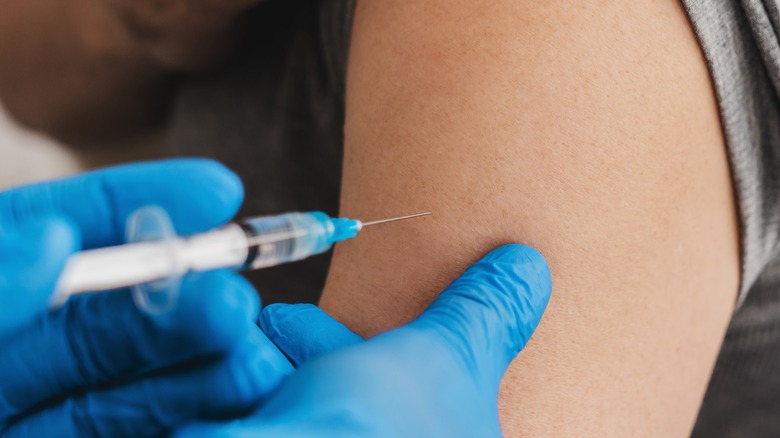Chilling Details About The Human Experiments At Holmesburg Prison
The people experimented on at Holmesburg Prison were subjected to practically every form of experimentation. Mind-altering drugs, cosmetics, viruses, and chemical warfare were all on the table when it came to human experimentation at Holmesburg. The people experimented on in the prison had very little choice or agency in the matter. Being a guinea pig meant making more money than was otherwise possible, and with doctors providing little-to-no information on the effects of the experiments, no one was able to make an informed decision.
The experiments at Holmesburg Prison lasted from 1951 to 1974, ending after public opinion started turning on the idea of experimenting on imprisoned people following the 1973 Congressional Hearing on Human Experimentation, but the damage was already done and many found themselves facing lifelong health problems due to the experiments they were subjected to at Holmesburg Prison.
One of the more horrifying things about the experiments at Holmesburg Prison is the fact that the doctor who started and ran the studies never saw anything wrong with what he was doing. Throughout his life, he defended his actions and lamented the concept of informed consent. Unfortunately, just because informed consent has become more widespread doesn't mean that imprisoned people aren't still being exploited. These are some chilling details about the human experiments at Holmesburg Prison.
What was Holmesburg Prison?
The Holmesburg Prison in Philadelphia, Pennsylvania was initially built in 1896 to serve as a county jail due to overcrowding at Philadelphia's Moyamensing Prison. Designed with the same layout of the Eastern State Penitentiary, the foundational mentality behind the prison was "separate penal confinement."
According to Hidden City, by the 1920s, Holmesburg already had a notorious reputation for brutality. Imprisoned people were kept in solitary confinement and only allowed 20 minutes of exercise per day. In 1922, the Evening Public Ledger described Holmesburg Prison as "the worst prison in the United States."
Holmesburg Prison made headlines in 1938 when four people imprisoned there were baked to death in a small concrete isolation block used for punishment known as the Klondike. The Philadelphia Inquirer reports that on August 20, 1938, 23 people were locked inside the Klondike in response to a hunger strike that half of all the prisoners were participating in. As temperatures inside the Klondike rose to almost 200 degrees, by Monday morning many of the men were unconscious and four were dead.
Holmesburg Prison was closed in 1995, but Abandoned America writes that while it was open, it earned the nickname "The Terrordome."
Acres of skin
In 1951, Dr. Albert Kligman was working as a professor of dermatology at the University of Pennsylvania Medical School when he was asked by prison officials at Holmesburg Prison to examine an outbreak of athlete's foot in the prison. According to Ampersand, Kligman was already known for his research in ringworm, which is a biological relative of the athlete's foot fungus tinea pedis.
Once there, Kligman's attention was attracted to something other than the athlete's foot he was supposed to be examining. The Mutter Museum writes that Kligman later told a Philadelphia newspaper reporter that "All I saw before me were acres of skin. It was like a farmer seeing a field for the first time." Kligman also described the prison as an "'an anthropoid colony, mainly healthy' under perfect control conditions," per "Acres of Skin" by Allen M. Hornblum.
It didn't take long for Kligman to set up shop in Holmesburg Prison. In 1968, Kligman revealed that he "began to go to the prison regularly, although I had no authorization. It was years before the authorities knew that I was conducting various studies on prisoner volunteers. Things were simpler then. Informed consent was unheard of. No one asked me what I was doing. It was a wonderful time," per The Baltimore Sun.
A majority Black population
When the experiments first began, the pay was around $5 a test and for many imprisoned people there was no other way for them to make that kind of money. Initially, imprisoned Black people would protest that "only whites were on the tests, [and they] get all the money and we don't get anything," according to "Acres of Skin." Those running the human experiments assured the imprisoned people that there would be no discrimination in testing and that anyone was welcome to participate, but "accusations circulated for years that black inmates were directed to the less desirable tests with lower pay."
When human experimentation started at Holmesburg Prison in the 1950s, imprisoned Black people were segregated in two of the cell blocks out of a total of ten. By the mid-1950s, imprisoned Black people were held three to a cell in three cell blocks and were close to making up 50% of the prison population. By the time the experiments reportedly ended in 1974, Black people made up almost 85% of Holmesburg Prison. At least 75% of the population at Holmesburg ended up being used in human experimentation.
The Boston College Law Review notes that most of the people imprisoned at Holmesburg were not yet convicted over a crime. "More than half of the inmates in Philadelphia prisons at the time were individuals awaiting trial or trying to make bail," Boston College Law Review explained.
Patch tests
Many different types of experiments were done on the people imprisoned at Holmesburg Prison but the most common tests were patch tests. The Baltimore Sun writes that patch tests involved separating out areas of a person's back with strips of hospital tape, dabbing lotion on each square, and then applying heat from a sunlamp. "Doctors checked the skin for peeling, burning and blistering at different temperatures," according to The Baltimore Sun.
According to "Acres of Skin," the patch test was the first test that Withers Ponton (sometimes written Withers Pond) underwent. He said it "nearly killed me it was so painful. I nearly went through the wall. I had a patch put on my back that covered a large area. It was a 10-day test and I wasn't allowed to take a shower."
Both imprisoned people and guards at Holmesburg Prison maintained that it was possible to recognize someone who had been imprisoned at Holmesburg "by the distinctive scars from skin burns and patch tests." One guard described the imprisoned people as looking like zebras when the patches came off.
Ron Keenan, who is now imprisoned at Graterford Prison after spending 34 months in Holmesburg in the late 1960s, stated that he "look[s] like a checkerboard with patches and skin discoloration on my arms, back, and chest."
Dermatological testing
Some of the human experiments conducted at Holmesburg Prison were dermatological studies. Lotions like skin creams, moisturizers, and suntan lotions were tested on imprisoned people, according to The Baltimore Sun, in addition to foot powders, deodorant, detergents, and hair dye. "Acres of Skin" writes that even liquid eye drops and toothpaste were tested on imprisoned people. While some of the tests may have seemed benign at the time, they often involved other painful procedures, like biopsies.
Sometimes experiments would also be conducted on the imprisoned people that didn't involve dermatological products but were towards research for dermatological products. The Philadelphia Inquirer reports that in 2022, it was revealed that Johnson & Johnson funded an experiment at Holmesburg Prison where imprisoned people were injected with asbestos "so the company could compare its effect on their skin versus that of talc, a key component in its iconic baby powder." Johnson & Johnson also funded a number of other experiments at Holmesburg Prison including testing toothpastes and mouthwashes for toxicity and a wound healing study that tested wound dressings.
At one point, Withers Pond also underwent something called a gauze test, which involves doctors making two 1-inch incisions on his lower back, inserting gauze pads into the wounds, and sewing up the wound. One of the gauze pads was removed 10 days after insertion and the other one 20 days after insertion, according to "Acres of Skin."
Chemical warfare testing
In the 1960s, Kligman and the University of Pennsylvania entered a $10,000 contract with Dow Chemical for a study to test dioxin on the people imprisoned at Holmesburg Prison. The New York Times reports that Dow Chemical ordered the tests after 49 employees at their herbicide plant in Midland, Michigan developed chloracne.
One of the tests conducted in 1966 involved putting 0.2 to 16 micrograms of dioxin, which is used to make Agent Orange and other herbicides, onto the foreheads of 60 imprisoned people. However, no one suffered any reactions. The following year, Kligman increased the dosage 468 times and applied 7,500 micrograms to the skins of 10 imprisoned people every other day for a month.
Eight people ended up with acne lesions and three people saw their lesions turn into inflamed blisters. These lesions took up to seven months to heal and Kligman also reportedly insisted that "no effort [should be] made to speed healing by active treatment," according to "Acres of Skin."
Even the Dow scientists were "quite startled" when they learned of the dosage increase and ultimately this played a part in Dow Chemical deciding to end their relationship with Kligman.
Medical testing
Imprisoned people at Holmesburg Prison were also subjected to medical experimentation. In "Sentenced to Science," Allen M. Hornblum writes that numerous people were given inoculations of the herpes, vaccinia, and wart viruses. One experiment involving wart viruses, herpes simplex, and herpes zoster was reserved for "healthy, colored, male volunteers" while another experiment called for "10 healthy white subjects."
"Acres of Skin" acknowledges that Kligman also did a number of experiments with ringworm. One involved applying "enormous quantities of fungi" to people's feet, and some were made to wear boots continuously for a week straight after being infected. Kligman reportedly noted that being able to experiment in a prison led him to have a newfound appreciation for ringworm.
Pharmaceutical companies would also test their new drugs in prison populations. The FDA required a three-phase testing process and imprisoned people "constituted nearly 100% of the Phase I experimental populations across the country." There were also tests comparable to the CIA's MK ULTRA. It's unclear if people were actually given LSD, but mind-altering drugs were repeatedly tested on imprisoned people. These experiments were often held in separate trailers and were associated with the US Army.
The business of exploitation
Dow Chemical and Johnson & Johnson weren't the only companies exploiting the people imprisoned at Holmesburg Prison. Dozens of companies took advantage and it wasn't just cosmetics companies. Pharmaceutical companies like Pfizer, Merck, Hoffman-Larouche, and Kline & French all reached out to Holmesburg Prison to conduct experiments for them, according to "Acres of Skin."
Even R. J. Reynolds Tobacco and the US Army sponsored a number of experiments. The Alliance For Human Research Protection explains that one Army-funded experiment involved "the effects of poisonous vapors on the skin" and Kligman justified it by claiming that "this is a program for national defense." Many of the experiments funded by the US Army were similar to the ones conducted by the Army on soldiers at the Edgewood Arsenal.
According to Ethical Considerations for Research Involving Prisoners, between 1962 and 1966, at least 33 pharmaceutical companies alone tested up to 153 experimental drugs at Holmesburg Prison.
Dr. A. Bernard Ackerman, a dermatologist who worked at Holmesburg during the 1960s, stated that "what started as scientific research became pure business," per The New York Times.
Vaguely compensated
Considering that an imprisoned person working at Holmesburg Prison could only make around 20 cents a day, the money offered in exchange for human experimentation was incredibly tempting. Depending on the test, imprisoned people could make between $10 and $300 per test. "Acres of Skin" explains that at one point, the US Army funded an experiment that paid between $1,000 and $1,500.
Al Zabala, who was imprisoned at Holmesburg during the 1960s, recalls that "three or four tests at a time could mean real easy money. Foot powder tests and deodorants would bring you $100 per month, and hand creams a buck a day. You could be making $300 to $400 a month." For the patch test on his back, Withers Ponton received $10 or $15. As Boston College Law Review notes, because many of the people imprisoned at Holmesburg were trying to make bail, they "were so desperate for money that they signed up for Kligman's experiments in droves."
Although these people were technically being compensated, there was little-to-no informed consent. This was even recognized by the prison staff. Retired Captain Alex Gougnin recalled that "the inmates did not know what they were being exposed to. [And test administrators] didn't tell the inmates." Any consent forms that the people imprisoned at Holmesburg ended up signing — which they didn't always – would be filled with technical rhetoric that almost deliberately obfuscated the nature of the experiments and few understood what they were signing.
Permanent damage
Despite the fact that Kligman and the other doctors experimenting on imprisoned people at Holmesburg insisted there would be no long term effects from the experiments, many people report permanent damage from participating. In his testimony before the Pennsylvania House Judiciary Committee's subcommittee on crimes and corrections, Joseph Smith states that his skin remains discolored and insensitive to touch in the places where the patch test was administered on his arms, legs, and black. His teeth also started falling out in 1969 and he attributes his tooth loss to the toothpaste test from Holmesburg.
"Sentenced to Science" explains that many of the cosmetics, powders, and shampoos that were tested on imprisoned people caused baldness, extensive scarring, and permanent skin and nail injury. Others experienced inflammation after chemical exposures that have never subsided. Many also have a great deal of difficulty trusting doctors after their experience and will refuse to see a doctor even if they require medical attention.
Unfortunately, The Baltimore Sun reports that it's difficult to assess the cases of long-term injury from the human experimentation at Holmesburg because Kligman destroyed all the records when the program was terminated in 1974. Meanwhile, Kligman repeatedly insisted throughout his life that "I still don't see there having been anything wrong with what we were doing," per The New York Times.
Individual settlements
Several people who were imprisoned at Holmesburg Prison were able to reach individual settlements regarding the human experimentation that they were subjected to. In 1992, the University of Pennsylvania settled a $6 million lawsuit brought by Edward Farrington that charged that "he developed leukemia as a result of University workers injecting him with radioactive material during a 1967 prison experiment," writes The Daily Pennsylvanian. However, details of the settlement are unknown and the University made no admission of guilt in the settlement.
Another one of the few people imprisoned at Holmesburg who was able to reach a settlement was Leodus Jones, who received a $40,000 settlement in 1984 and bore lifelong scars from the experiment. Unfortunately, The Philadelphia Inquirer reports that "his subsequent effort to organize inmates for broader legal action fell apart." "Acres of Skin" shared that William Charles Smith also received an out-of-court settlement in 1984. August Sellitto, the city's legal representative, reportedly stated that "it would be very dangerous to put this case before a jury."
Filing a civil suit
In 2000, 298 people who were formerly imprisoned at Holmesburg Prison filed a civil group lawsuit for their long term injuries against Kligman, University of Pennsylvania, Johnson & Johnson, and Dow Chemical. According to The Pennsylvania Gazette, the lawsuit alleged that despite the fact that imprisoned people were paid for their participation, they were incredibly "underpaid and under-informed about the potential dangers."
The Daily Pennsylvanian reports that the case was brought to the Federal District Court, but the court deemed that the statute of limitations had passed. The Third Circuit Court of Appeals held up this decision stating that the plaintiffs had waited too long to sue and that "it is simply not reasonable to believe that plaintiffs were not aware of the facts underlying this litigation many, many years before bringing suit," per The Intelligencer.
But according to "Sentenced to Science," after "Acres of Skin" was published in 1998, many people who'd been subjected to the human experimentation at Holmesburg Prison "realized for the first time that they had rights as experimental subjects" and could sue despite the vague papers they'd been forced to sign.

